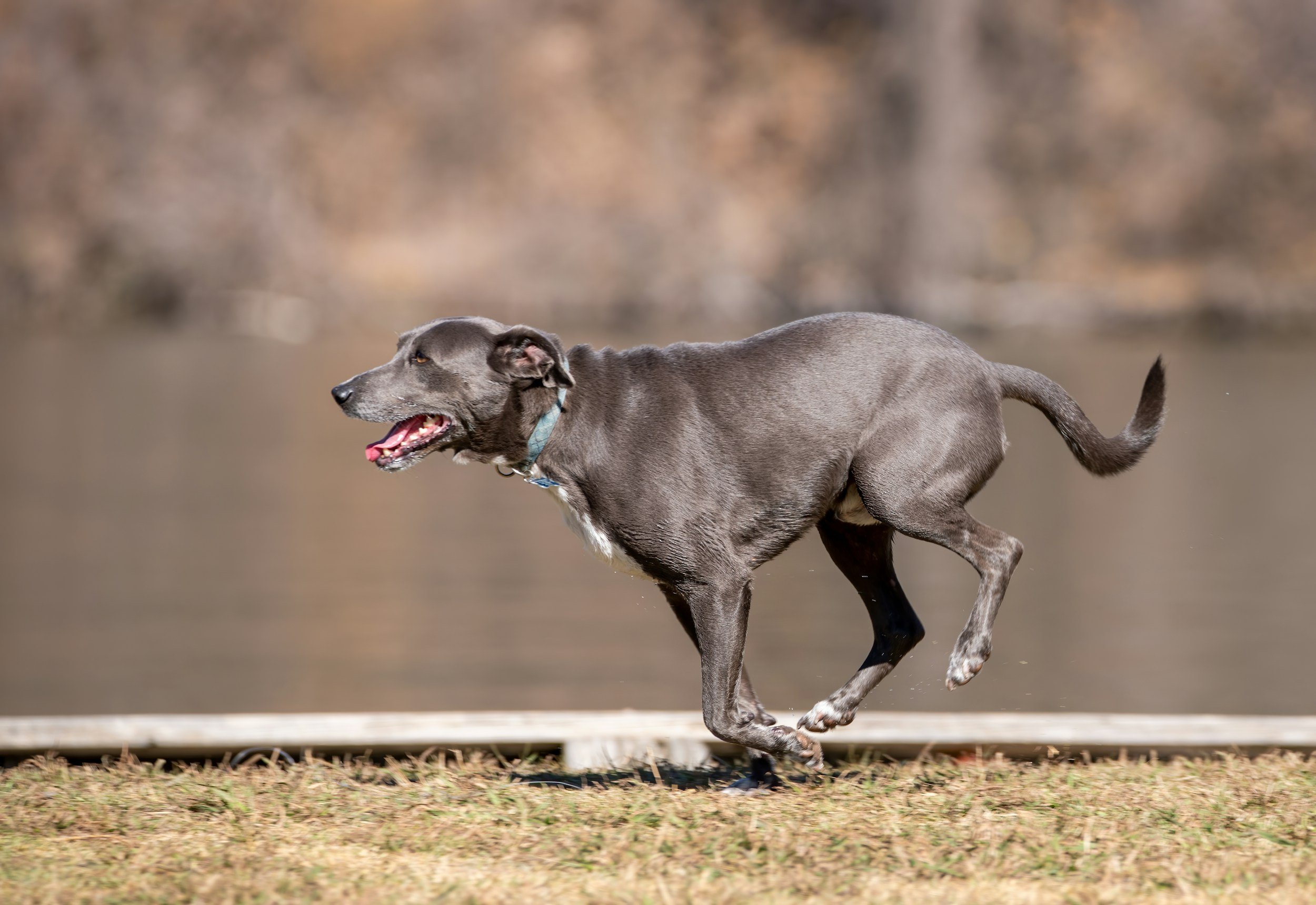
Tibial Plateau Leveling Osteotomy
What is a TPLO?
A TPLO (Tibial Plateau Leveling Osteotomy) is a surgery that changes the standing angle of the top of the tibia (shin bone) so that there is no forward instability of the tibia during weight bearing activities (standing, walking, running) that occurs when there is a rupture of the cranial cruciate ligament (same as ACL in people).
During the TPLO surgery we explore the stifle (knee) joint and address any meniscal problems, then we make a cut in the top of the tibia with a special saw blade and rotate the segment and finally secure it with a specially designed TPLO plate and screws. Postoperative radiographs are taken to confirm appropriate placement of implants. We also inject a long-acting lidocaine to help with pain.
Why is a TPLO being recommended to me?
Some dogs have a condition called Cranial Cruciate Disease that leads to degeneration of the ligament so rupturing both sides is greater than 50%. They can develop partial CCL tears or complete CCL tears. It is also common that they can tear the medial meniscus at the same time. Furthermore, medical literature reports somewhere between 40-60% of dogs will tear the opposite CCL within a year. This is not due to trauma but the nature of disease in the CCL of some dogs.
For both partial or complete tears, if they are consistently lame, then TPLO is recommended.
What is recovery like?
Recovery time is 8-12 weeks after surgery. All high-impact activity should be eliminated until your veterinary clears your pet to resume normal activity, and at a minimum for 8-10 weeks. This means no running, jumping (including on or off couches), or unassisted stairs.
Proper activity restriction often requires a crate, pen or small room with no furniture. If you have a high-energy pet, you should inquire with your veterinarian on strategies to avoid injuries during recovery. Activity should be limited to short leash walks (10-15 minutes) for bathroom breaks only.
Immediately post-surgery, your pet may be drowsy, uncoordinated or nauseous. Unless otherwise instructed, we normally recommend the following for food and water:
Water Reintroduction: Offer a small amount of water 30 minutes to 1 hour after arriving. If there are no signs of nausea and water is kept down, more can be offered in small amounts. You may resume normal water access the following day,
Food Reintroduction: Offer 1/2 their normal feed 2 hours after arriving home. If there are no signs of nausea and food is kept down, you may resume normal feedings the following day.
Detailed postoperative instructions will be provided to you after the surgery that outline medications, and incision care. Bandages on the IV catheter site can be removed once you get home. Local bandages applied to the surgical site can be removed in 72 hours unless otherwise instructed. It is normal for some bruising and swelling to occur. If there is no pain or discharge associated with the swelling, continue to monitor at home. Please notify us or your veterinarian if you observe:
Increased redness/bruising over time
Odorous or pus-like discharge
Opening of the incision site
Increased swelling
Signs of acute pain.
To aid in incision healing, please utilize a Lick Sleeve to prevent licking or chewing (incision sites often get itchy as they heal), and do not hesitate to use a cone (e-collar) to prevent chewing. Keep the Lick Sleeve clean and dry.
The incision will typically be closed with all absorbable sutures so you do not need to bring them back for suture removal but it is recommended that you at a minimum email a photo of the incision site and a short walking video at 2 weeks. If the incision is healed as expected at 14 days, you will not need to take additional precautions to keep it dry and you may stop use of the Lick Sleeve.
Eight weeks after surgery, your veterinarian will take recheck radiographs of the stifle and send them for our review. Videos of your pet walking and trotting at 8 weeks is also helpful to evaluate your pet’s recovery.
Formal physical therapy is recommended for most patients in the recovery period. However, this is not required nor critical for a successful outcome following a TPLO. It does provide for a stronger recovery in the first year following surgery.
At-Home Treatments
If tolerated, you can assist your pet recover with the following care:
Cold Therapy
Upon returning home for up to two weeks:
Prepare a cold compress (ice pack, ziplock with ice cubes, frozen bag of vegetables).
Wrap in a towel and place against incision.
Continue contact for 1-15 minutes every 4-8 hours as tolerated by your pet.
Passive Range of Motion
The day after surgery for up to two weeks:
Place your pet in a standing position or laying down on their non-surgical side.
Slowly bend leg that was operated on into fully flexed position.
Gently release pressure to return leg back to standing or relaxed starting position.
Repeat for 5-10 minutes, two to three times a day as tolerated.
IMPORTANT: DO NOT FORCE ANY MOTION YOUR PET IS RESISTANT TO PERFORM.
